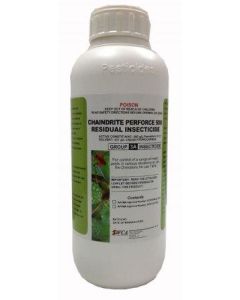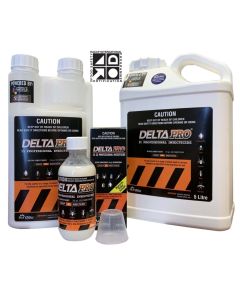Biting Midge / Sandfly
- Article
- Biting Midge / Sandfly
Biting Midge/Sandfly
Scientific Name: Family Ceratopogonidae
How to identify a biting midge
Biting midges (often referred to as “sandflies”) are small biting flies about the size of a pin-head belonging to the Ceratopogonidae family. They are especially prolific in coastal areas of tropical and subtropical Australia where some species can cause significant pest problems. They make up for their small size with the large numbers in which they can occur and their painful bite.

Where are biting midges commonly found?
Biting midges live around freshwater creeks, inter-tidal estuaries and mangroves. There is one well known exception to this which breeds in the mulch and leaf litter of parks, gardens and bushland which is sometimes referred to as the Bushland Midge or Lasiohelea.
Why are biting midges considered a pest?
Biting midges are not known to transmit any human diseases in Australia. However they are a significant nuisance and close to breeding sites they can make life unbearable. Midge bites can cause persistent itching and may develop into blisters that weep a few days after the bite. Midges inject an anticoagulant in their saliva when they bite and itching is due to an immune response to chemicals in the saliva. Scratching can result in secondary infection. People do develop a degree of immunity to bites with repeated exposure. This is probably why the severest reactions to bites are often seen in children, tourists and new residents to midge prone areas. With increasing urban expansion into coastal areas near midge breeding habitats this is an on-going problem.
What is the biology and lifecycle of a biting midge?
-
Culicoides longior – breeds in mangrove mud and has a pest range of about 800 m. It has rarely been studied even though it can be a severe localised pest.
-
Culicoides marmoratus – breeds in mud and sand associated with mangroves. Can be carried for kilometres from breeding sites by wind.
-
Culicoides ornatus – breeds in fine silt mud of mangroves and can travel for kilometres without wind assistance. Usually a serious pest in residential areas near where it breeds but not currently known to occur south of the Brisbane River.
-
Culicoides molestus – breeds in clean sandy beaches of sheltered tidal waterways. It is a well known pest in constructed canal estate beaches. Pest range over 400 m.
-
Culicoides subimmaculatus group species – a complex of species that breed in sandy mud associated with mangroves. This group is currently being reviewed using DNA technology and initial results indicate that three species occur in southeast Queensland and northern New South Wales. Little is known about the differences in behaviour and biology of these species. Species in this group have a pest range of about 400 m.
Like many flies the life-cycle of biting midges consists of an egg, four worm like larval stages or instars, a pupa and finally the adult male and females. Only the females take a blood meal, using the protein to develop a batch of eggs. A few species such as C. ornatus can develop their first batch of eggs without the need for a blood meal. There is little midge activity in winter as it is too cold for development. Adult midges live for one to two weeks.
Chemicals Required to Control Biting Midge/Sandfly
There are a number of chemical controls that can be utilised to treat biting midges:
Barrier treatments: Barrier treatment is the application of a residual insecticide such as bifenthrin to external surfaces such as house walls, solid fences and garden vegetation – anywhere a midge might rest. There is some evidence that this method can reduce midge numbers for up to six weeks but as with interception barriers its success depends on whether the midges will rest on the treated surfaces and this will vary from house to house. Treatments should be undertaken by a licensed and experienced pest controller for best results.
Thermal fogging and ULV misting: Insecticidal fogs and mists have been used for short term management of biting midges. The insecticides used in thermal fogs and ultralow volume (ULV) mists are not residual and consequently only kill what is flying at the time of application. Reinvasion of an area by midges shortly after treatment is likely, especially if close to a breeding site. The fog is only effective while it is in the air which might be for only a few minutes. If reinvasion occurs there is little point in daily retreatments. The insecticides used will kill all insects and as such are not environmentally friendly and cannot be used near waterways or mangroves.
Household protection Treated flyscreens: Biting midges are small enough to be able to get through normal flyscreens. Anecdotal reports suggest that treating flyscreens with a water based, UV stable insecticide such as bifenthrin does make them effective as a barrier to midges. They would need retreating about every six weeks.
Spatial repellents: Mosquito coils, lanterns and space sprays are all effective provided that there is little air movement. They can be very effective indoors, less so on verandahs and rarely effective outdoors unless it is very still. Most use synthetic pyrethrins as the active chemical which have very low mammalian toxicity. Some of the recent products containing actives such as metofluthrin do not require heat to vaporise and will last for about three weeks. This is far more convenient than older products such as mosquito coils which require heat to vaporise the active and only last for about eight hours.
Management Tips for Biting Midge/Sandfly
The simplest ways to manage biting midges is to cover up and use personal repellents.
Spraying in and around the house to kill midges is effective (see chemicals required) and maintenance of your premises:
-
Fans: Midges like still air and consequently air movement from ceiling or pedestal fans can be very effective for protection both indoors and on verandahs.
-
Fine-meshed screens: There are a number of fine-meshed screens available designed to keep midges out. They will decrease air flow and possibly light entry compared to a normal flyscreen but would be effective and not need on-going insecticide treatments.
PRODUCT SOLUTIONS
-
 Coopex Residual Insecticide250g/kg Permethrin
Coopex Residual Insecticide250g/kg PermethrinCoopex Residual Insecticide is a wettable powder registered for the residual control of cockroaches, ants, carpet beetles, spiders, clothes moths, bed bugs, silverfish and mosquitoes.
-
 Biflex Mikron Insecticide64g/L Bifenthrin, 53g/L Acetamiprid
Biflex Mikron Insecticide64g/L Bifenthrin, 53g/L AcetamipridBiflex Mikron Insecticide provides lightning fast control and enduring residual protection from the powerful combination of two active ingredients in a cutting-edge microemulsion formulation.
-
 Biflex Aqua Max Insecticide and Termiticide100g/L Bifenthrin
Biflex Aqua Max Insecticide and Termiticide100g/L BifenthrinBiflex AquaMax is the first ever Professional Strength, multi-insecticide and termiticide. Effective on a wide range of common household pests and all termite species in Australia.
-
 Fury 120 SC Insecticide 1L80g/L Bifenthrin, 40g/L Alpha-Cypermethrin
Fury 120 SC Insecticide 1L80g/L Bifenthrin, 40g/L Alpha-CypermethrinFury 120 SC Insecticide is specifically formulated to create a superior, longer-lasting strength general insecticide that works in two powerful ways to rid your clients of all general household pests.
-
 Chaindrite Perforce 500 Residual Insecticide500 g/L Permethrin
Chaindrite Perforce 500 Residual Insecticide500 g/L PermethrinChaindrite Perforce 500 Residual Insecticide is formulated for the control of a broad range of insects in various situations as per the Directions for Use table.
-
 Vectorforce ULV and Thermal Fogging Insecticide 5L25g/L Cypermethrin Solvent
Vectorforce ULV and Thermal Fogging Insecticide 5L25g/L Cypermethrin SolventVectorforce Thermal Fogging and ULV Insecticide Concentrate is formulated for the knockdown control of adult mosquitoes, biting midges, flies and cockroaches.
Out of stock -
 Antagonist Pro Insecticide80g/L Bifenthrin
Antagonist Pro Insecticide80g/L BifenthrinANTagonist PRO insecticide is a suspension concentrate formulation containing a Polymer Enhanced Synthetic Pyrethroid approved for the treatment of ants, spiders, wasps, cockroaches, mosquitoes, midges, fleas, flies, ticks, termites and turf pests including lawn armyworms, sod webworms, argentine stem weevil, billbug, African black beetle, ants and ornamental pest including mites, aphids, caterpillars, loopers, earworm, budworm, light brown apple moth, whitefly, mealybug, thrips and cutworms.
-
 Delta Pro 25SC Professional Insecticide25g/L Deltamethrin
Delta Pro 25SC Professional Insecticide25g/L DeltamethrinFor the control of a range of insect pests such as spiders, cockroaches, flies, ants, mosquitoes in various situations.
-
 Sumilarv Granules 250gm
Sumilarv Granules 250gmSumilarv Granules 250gm are registered for the control of the larvae of mosquitoes, midges and drain and latrine flies in non-natural water sources.
-
 Cislin 25 Professional Insecticide25g/L Deltamethrin
Cislin 25 Professional Insecticide25g/L DeltamethrinCislin 25 Professional Insecticide is a broad spectrum low odour insecticide with excellent residual activity.
-
 Killmaster Zero Pest Insecticide Strip 65g
Killmaster Zero Pest Insecticide Strip 65gKillmaster Zero Pest Strip is a highly effective, long-lasting solution for managing a wide range of flying and crawling insect pests, including cockroaches, moths, silverfish, ants, and flies. Designed for non-living areas such as storage spaces, store rooms, and industrial bins, this pest strip provides hassle-free protection for up to 4 months.
Out of stock
JOIN OUR NEWSLETTER NOW!
Be the first to hear about the latest specials, products, tips and ideas.

